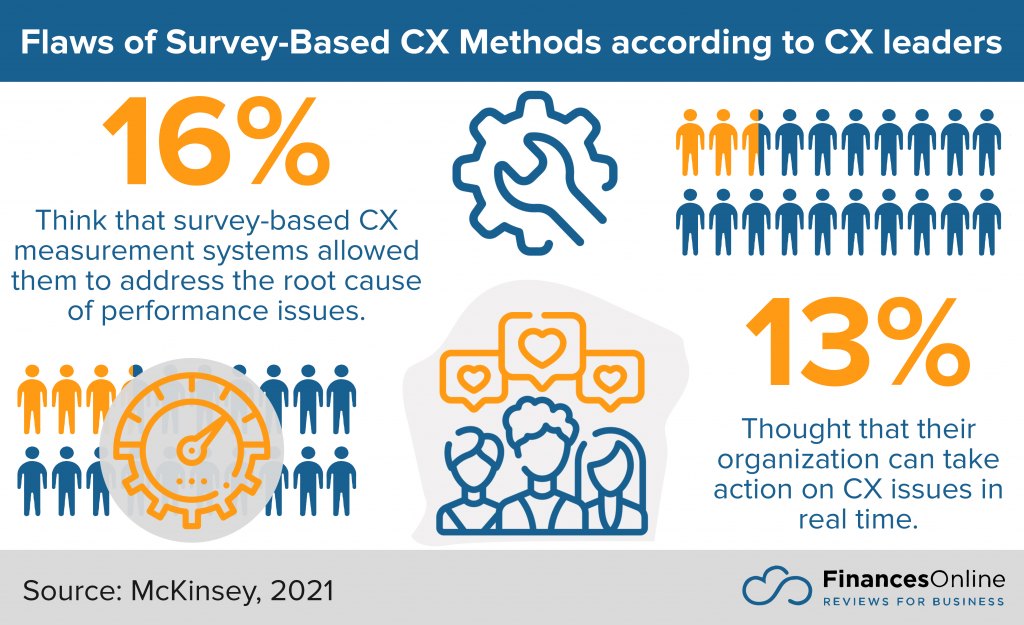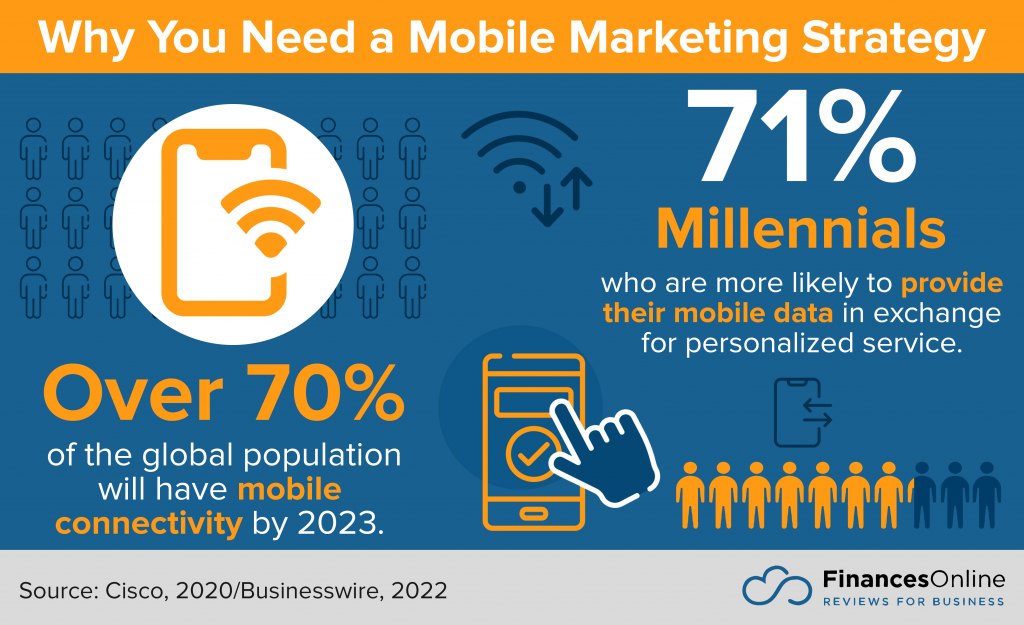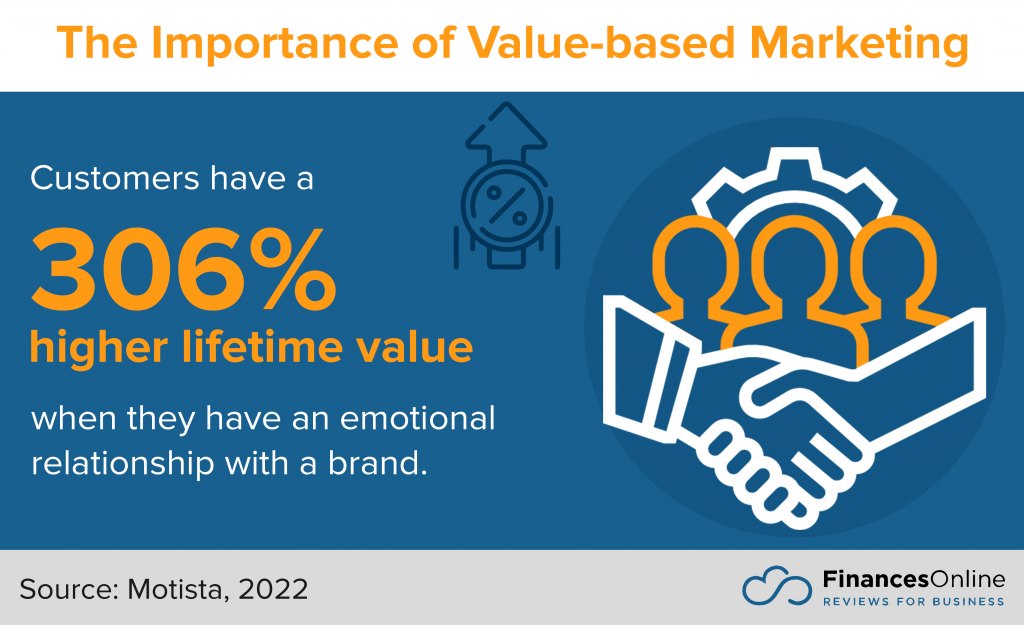Digital tools for businesses are everywhere and marketers are among those who regularly use marketing automation software to accomplish their daily tasks. With digital marketing and social media users on the continuous rise, it’s not surprising to find out that the global marketing automation market size is projected to reach $14,180.6 million in 2030, at a CAGR of 12.3% between 2020 and 2030.
With so many features and tools used in digital marketing, there can also be many ways to implement them in marketing strategies. This article will cover the top 10 marketing automation trends influencing how businesses plan and execute their marketing activities. It will provide details on how advanced tech like AI is helping marketers and discuss some challenges to creating personalized customer experiences in today’s online sea of data.

Marketing Automation Trends Table of Contents
Marketers have relied on marketing automation tools for decades to the point that it has become impossible to accomplish day-to-day marketing tasks without them. From lead generation to text messaging and trigger-based email sequences, the use cases of marketing automation tools are endless. And with 4.95 billion or 62.5% of the world population now using the internet, marketers need more powerful digital tools to help them reach customers and maximize opportunities online.
Source: Ascend2, 2021
How exactly do marketers plan to implement marketing automation tools in their tasks? One study showed that 40% of marketers are planning to use it for email marketing activities in 2022 while 39% are going to use automaton for social media management. Landing pages (26%), campaign tracking (23%), and content management (22%) are also high on the priority list for marketers. As businesses continue to rely on marketing automation tools, here are 10 important trends we can expect in the years ahead.
1. Increased Use of Behavior Analytics
If you ever want to know the power of behavior analytics, just look at Netflix, Google, and Amazon—companies that have built their empires on customer data and analytics. Behavior analytics will continue to be very useful to marketers to gain a deeper understanding of customers’ interests, pain points, and motivations for future actions. Using behavior analytics can help businesses attract more leads, retain customers, and provide better value. With hyper-personalization taking over the customer experience (CX), using real-time data from customer interactions and events is also more reliable than traditional survey-based CX methods.
For example, a study revealed that only 16% of CX leaders believed that survey-based CX measurement systems allowed them to address the root cause of performance issues. Meanwhile, only 13% thought that their organization can take action on CX issues in real-time (McKinsey, 2021).
As competition gets tougher and businesses strive to win their share of new prospects and loyal customers, we can expect marketers to leverage behavior analytics in creating more meaningful and relevant products, services, and promotions in the years ahead. This can be further supported by the fact that CMOs and marketers ranked customers as the number one influencer of their marketing strategy (Salesforce, 2021).

Key Use of Behavior Analytics Highlights
- Behavior analytics will continue to be very useful to marketers to gain a deeper understanding of customers’ interests, pain points, and motivations for future actions.
- Using real-time data from customer interactions and events is more reliable than traditional survey-based CX methods.
- CMOs and marketers ranked customers as the number one influencer of their marketing strategy.
2. Focused on Account-based Marketing
When COVID-19 hit in 2020, many businesses had to turn their customer expansion programs to customer retention programs to maintain revenue. Suddenly, account-based marketing (ABM) was in the spotlight as marketers and salespeople worked together to focus on high-value accounts. Seventy-three percent of marketers admit that COVID affected their ABM strategy (Businesswire, 2021).
Focusing on account-based marketing proved to be beneficial as 73% of businesses indicated that their ABM strategy exceeded their expectations (DemandGen, 2021). Marketers reported benefits such as the efficient use of their marketing resources (53%), a clearer path to ROI (37%), and more trustworthy results (36%). With these results, 81% of large enterprises plan to put more money and resources into ABM (Businesswire, 2021). This is a clear sign that businesses will not abandon their current ABM programs and will expand on them in the future.
Source: DemandGen, 2021
Key Account-Based Marketing Highlights
- COVID-19 made businesses focus on ABM to maintain revenue from high-value accounts.
- 73% of businesses indicated that their ABM strategy exceeded their expectations.
- 53% of marketers agreed that ABM helped them efficiently use their marketing resources.
3. Shift to First-party Data to Understand Customers
Marketers have been using third-party cookies for decades to collect customer data for personalization and the creation of customized customer experiences. But with Google’s efforts to start phasing out third-party cookies on Chrome in 2022, we can expect marketers to turn to other means of collecting data. One of them is using first-party data, which is information provided by customers themselves and owned by the company.
Using first-party data is also less expensive and produces good ROI. A study showed that brands that used first-party data for their key marketing functions got up to 2.9 times uptick in revenue and 1.5 times increase in cost savings (Think with Google, 2021).
The challenge, though, is how to collect personal data from customers while making sure your company is compliant with current data privacy regulations such as the GDPR, CCPA, etc. This is where marketing automation platforms can truly help businesses. We can expect more marketers to depend on marketing automation software that includes multi-layer security protocols, SSO logins, and security badges. Platforms that also include features that help businesses with GDPR and other regulatory compliance will also be preferred.
Key First-Party Data Highlights
- Google will phase out third-party cookies on Chrome in 2022.
- Brands that used first-party data for their key marketing functions got 2.9 times revenue and 1.5 times cost savings.
- Marketers need to align data collection/CX personalization and data privacy compliance.
4. Reliance on AI and Machine Learning
Two key technologies being used in many marketing automation features are artificial intelligence (AI) and machine learning (ML). Behavioral analytics, lead scoring, and segmentation are just a few of the key marketing tasks that run on AI and ML. In a global survey, 41% of marketers reported an increase in revenue and business performance, thanks to the use of AI in marketing campaigns (Statista, 2021).
Currently, AI and ML are also finding their way into content marketing. These technologies assist marketers in content strategy research and development and quick content generation. They’re also the tech behind custom feed algorithms that content strategists use to generate blog article topics, news, and other variety of content that help increase customer engagement.
Moreover, AI and ML are also making it possible for marketers to create relevant messages for customers throughout the customer journey. For example, when a person clicks an ad, ML will pick up on these actions and use them for future campaigns and customer touch-points as the user progresses through their customer journey.
Source: Statista, 2021
Key AI and Machine Learning Highlights
- 41% of marketers reported an increase in revenue and performance, thanks to AI.
- AI and ML are also finding their way into content marketing.
- AI and ML enable marketers to create relevant messages for customers throughout the customer journey.
5. Implementation of Mobile Marketing Strategy
To say that mobile traffic is huge is an understatement. Based on estimates more than 70% of the global population will have mobile connectivity by 2023 (Cisco, 2020). Moreover, 71% of millennials are more likely to provide their mobile data in exchange for more personalized service (Businesswire, 2022). With such a grand stage for opportunities, marketers can’t neglect their mobile marketing strategy.
In 2022 and beyond, we can expect marketers to implement marketing automation tools specifically to boost their mobile presence. Examples of these tools include push notifications, in-app ads, and SMS. Marketers will also likely prioritize developing content that’s mobile-optimized and use video as their preferred method for the delivery of marketing messages. The numbers are already pointing in this direction as global mobile ad spending reached $295 billion in 2021. It’s estimated to reach $350 billion by the end of 2022 (MarketingDive, 2022).

Key Mobile Marketing Strategy Highlights
- 70% of the global population will have mobile connectivity by 2023.
- 71% of millennials are more likely to provide their mobile data in exchange for more personalized service.
- Mobile marketing spending is estimated to reach $350 billion by the end of 2022.
6. Automation of Social Media Management
Active social media users now make up 58.4% of the world population or 4.62 billion people (Datareportal, 2022). On average, these users spend two hours and 27 minutes using their social media accounts. And with numbers expected to continually rise in the next years, social media is indeed a sea of opportunities and networking for many brands.
However, there can be a lot of noise on social media platforms. How can marketers make sure that their messages are getting across to their target social media audience? Also, it can be challenging to manage multiple social media accounts on Facebook, TikTok, Instagram, etc.
With this in mind, we can understand how marketing automation tools can help marketers efficiently manage their social media marketing. Tools like automated scheduling, analytics, and AI-powered content generation all come together to help brands create relevant content, send it out to the right audience at the right time, and increase engagement and brand credibility. As revealed in a study, 39% of businesses plan on using marketing automation for social media management (Ascend2, 2021).
Overview of Social Media Use, 2022
Source: Datareportal, 2022
Designed byKey Social Media Management Highlights
- 58.4% of the world population or 4.62 billion people use social media.
- Social media users spend an average of two hours and 27 minutes using their social media accounts.
- 39% of businesses plan on using marketing automation for social media management.
7. Move to Omnichannel Marketing
With billions of people online, businesses are no longer limited to traditional forms of advertising such as TV and print newspapers. Consumers are using multiple devices, apps, and websites daily, so there are more outlets for marketers to reach their target audience.
Customer channels include websites, social media platforms, and instant messaging apps. With marketing automation software, marketers can effectively manage different communication channels without losing context of their conversations. In fact, 92% of marketers today use more than one channel, and 81% manage more than three (Hubspot Marketing, 2022).
Omnichannel marketing also enables businesses to implement their retargeting strategies. That’s because when all your customer touchpoints are integrated, you can deliver marketing messages simultaneously on all platforms throughout the customer journey.
Key Omnichannel Marketing Highlights
- Marketing automation helps marketers manage different communication channels without losing context of their conversations.
- 92% of marketers today use more than one channel.
- Omnichannel marketing also enables businesses to implement their retargeting strategies.
8. Use of Intelligent and Conversational Chatbots
Companies are experiencing the benefits of using chatbots to marketing and customer service. Technological advancements in AI and ML are now making chatbot conversations feel more natural. Also, chatbots can help companies save on the cost of maintaining a 24/7 call center just to provide quick answers to customer requests.
In the coming years, we can expect chatbots to become smarter as more investments flow into conversational AI and natural language processing (NLP) bots. It’s projected that up to 70% of customer interactions will involve emerging technology like chatbots (Salesforce, 2021). Not only can intelligent chatbots help businesses save on customer service costs but also increase customer engagement as part of marketing efforts.

Key Conversational Chatbot Highlights
- Advancements in AI and ML are making chatbot conversations feel more natural.
- 70% of customer interactions will involve emerging technologies like chatbots.
- Intelligent chatbots help businesses save on customer service costs.
9. Focus on Marketing Funnel Automation
There can be many reasons why a lead enters a marketing funnel. Since every potential customer is different, marketers need an efficient process that can help them learn more about a lead and guide them into the different stages of the funnel until they turn into actual clients.
This is where marketing automation software comes in. Automation tools included in a marketing automation platform can deliver optimized content for a specific stage of a marketing funnel. Marketers no longer need to spend hours manually drafting content and sending it to each client. Triggers and rules can be set so that actions happen automatically throughout the lead nurturing process. Lead warming email sequences, for example, are executed via automation tools.
Another type of marketing funnel is a video marketing funnel. Video content is twice as likely to be shared by internet users than articles or still images (Wyzowl, 2021). Also, with 82% of the global internet traffic in 2022 coming from video streaming and downloads (Cisco, 2020), we can expect marketers to include optimized video content in their marketing funnel.
Source: Wyzowl 2021
Key Marketing Funnel Automation Highlights
- Automation tools included in a marketing automation platform can deliver optimized content for a specific stage of a marketing funnel.
- Triggers and rules can be set so that actions happen automatically throughout the lead nurturing process.
- Video content is twice as likely to be shared by internet users than articles or still images.
10. Adoption of Value-based Marketing
Personalization has been used by marketers to attract more leads and retain customers. But another strategy that takes personalization to the next level is value-based marketing—brands connect with their target audience based on shared values or social and ethical issues. This can be a powerful strategy not only to generate leads but also to fuel customer loyalty, which is important when you consider that customers have a 306% higher lifetime value when they have an emotional relationship with a brand (Motista, 2022).
When implementing value-based marketing, predictive analysis, segmentation, and optimized content creation are just some of the marketing automation tools that can help ensure that marketers are delivering unified marketing campaigns with a consistent tone and voice. By making it easy to tailor how brand values are shared and delivered, marketers will be able to create more relevant and compelling messages that can boost lead generation results and customer retention.

Key Value-Based Marketing Highlights
- Value-based marketing is a strategy where brands connect with their target audience based on shared values.
- Marketing automation tools can help deliver value-based marketing content with a consistent tone and voice.
- Customers have a 306% higher lifetime value when they have an emotional relationship with a brand.
Implementing Automation in Your Marketing Strategy
These top 10 marketing automation trends provide a glimpse into how marketing automation software products are enabling businesses to streamline their marketing efforts. They also show how technology like AI and ML help marketers get better insights into their audience and in return create more relevant, personalized content.
In 2022 and the years ahead, the trends strongly point to the direction of more automation tools, smarter features, and a more human touch for marketing strategies. An important thing to note though is that, ultimately, trends are guides that are meant to help marketers look at their own strategies and where they can improve. Automation is just one aspect of the more complex world of digital marketing trends.
Key Insights
- Behavior Analytics:
- Helps marketers understand customers’ interests, pain points, and motivations.
- Utilizes real-time data for more reliable customer experience insights compared to traditional survey methods.
- Recognized by CMOs and marketers as the top influencer of marketing strategies.
- Account-Based Marketing (ABM):
- Gained prominence due to COVID-19, shifting focus to customer retention.
- Exceeded expectations for 73% of businesses, improving resource efficiency and ROI.
- 81% of large enterprises plan to invest more in ABM.
- First-Party Data:
- Marketers are shifting from third-party cookies to first-party data due to privacy regulations.
- First-party data leads to increased revenue and cost savings.
- Emphasizes the need for data privacy compliance alongside customer personalization.
- AI and Machine Learning:
- Enhances behavioral analytics, lead scoring, and segmentation.
- Drives content strategy and generation, creating personalized customer messages.
- 41% of marketers reported increased revenue and performance due to AI.
- Mobile Marketing Strategy:
- Significant due to the high global mobile connectivity rate.
- Millennials prefer personalized service in exchange for mobile data.
- Mobile marketing spending continues to rise, emphasizing the need for mobile-optimized content.
- Social Media Management Automation:
- Necessary due to the vast and growing number of social media users.
- Helps manage multiple accounts, create relevant content, and increase engagement.
- 39% of businesses plan to use automation for social media management.
- Omnichannel Marketing:
- Utilizes multiple communication channels to reach target audiences effectively.
- Essential for implementing retargeting strategies and maintaining conversation context.
- 92% of marketers use more than one channel, with 81% managing more than three.
- Intelligent Chatbots:
- AI and ML advancements make chatbots more natural and efficient.
- Expected to handle 70% of customer interactions.
- Cost-effective and enhances customer engagement.
- Marketing Funnel Automation:
- Delivers optimized content for different stages of the marketing funnel.
- Automation tools set triggers and rules for efficient lead nurturing.
- Video content is highly effective and frequently shared by internet users.
- Value-Based Marketing:
- Connects brands with audiences based on shared values and social issues.
- Enhances customer loyalty, leading to higher lifetime value.
- Automation tools ensure consistent delivery of value-based marketing messages.
FAQ
- What is marketing automation and why is it important? Marketing automation refers to the use of software to automate repetitive marketing tasks. It is important because it increases efficiency, allows for better targeting and personalization, and helps businesses manage complex marketing campaigns across multiple channels.
- How does behavior analytics benefit marketers? Behavior analytics helps marketers gain deep insights into customer interests, pain points, and motivations. By analyzing real-time data from customer interactions, marketers can create more relevant and personalized customer experiences, leading to increased customer retention and loyalty.
- What is account-based marketing (ABM) and how has it evolved? Account-based marketing (ABM) is a strategy focused on targeting high-value accounts rather than a broad audience. It gained prominence during the COVID-19 pandemic as businesses shifted from expansion to retention strategies. ABM has proven to be highly effective, with many businesses planning to invest more in it.
- Why are marketers shifting to first-party data? Marketers are shifting to first-party data due to increasing privacy regulations and the phasing out of third-party cookies. First-party data, provided directly by customers, is more cost-effective, compliant with privacy laws, and leads to better personalization and higher ROI.
- How are AI and machine learning used in marketing automation? AI and machine learning are used in marketing automation to enhance tasks such as behavioral analytics, lead scoring, segmentation, and content generation. They enable marketers to create personalized messages and campaigns, improving customer engagement and business performance.
- What is the significance of mobile marketing in today’s digital landscape? Mobile marketing is significant due to the high rate of mobile connectivity and usage worldwide. With a large percentage of the population accessing the internet via mobile devices, marketers must optimize content for mobile and leverage tools like push notifications and SMS to reach their audience effectively.
- How do automation tools help in social media management? Automation tools help manage multiple social media accounts by scheduling posts, generating content, and analyzing engagement. They ensure that marketing messages reach the right audience at the right time, increasing brand visibility and customer engagement.
- What is omnichannel marketing and why is it effective? Omnichannel marketing involves using multiple communication channels to reach customers. It is effective because it allows for a cohesive customer experience across different platforms, enabling marketers to deliver consistent messages and implement retargeting strategies seamlessly.
- How are chatbots enhancing marketing and customer service? Chatbots, powered by AI and machine learning, provide quick and natural interactions with customers. They are cost-effective, available 24/7, and enhance customer engagement by providing instant responses to inquiries, thus supporting marketing efforts.
- What role does video content play in marketing funnel automation? Video content is highly engaging and frequently shared by internet users. In marketing funnel automation, video content helps capture attention, educate prospects, and move them through the funnel stages efficiently, making it a crucial element in lead nurturing strategies.
- What is value-based marketing and how does it impact customer loyalty? Value-based marketing connects brands with their audience based on shared values and social issues. This strategy fosters emotional connections, leading to higher customer loyalty and lifetime value. Marketing automation tools help deliver consistent and compelling value-based messages.
References:
- Ascend2 (2021). The State of Marketing Automation. Retrieved from ascend2.com
- Businesswire (2021). New Research Provides Insight Into COVID’s Impact on Account-Based Marketing. Retrieved from businesswire.com
- Businesswire (2022). Survey Reveals Millennial Expectations for Mobile Service in 2022. Retrieved from businesswire.com
- Cisco (2020). Cisco Annual Internet Report (2018–2023) White Paper. Retrieved from cisco.com
- DemandGen (2021). 2021 State of ABM. Retrieved from demandgenreport.com
- Datareportal (2022). Digital 2022: Global Overview Report. Retrieved from datareportal.com
- Hubspot Marketing (2022). Which Marketing Channels Will Brands Prioritize in 2022. Retrieved from blog.hubspot.com
- MarketingDive (2022). Mobile ad spend leapt 23% in 2021, on track to hit $350B this year. Retrieved from marketingdive.com
- McKinsey (2021). Prediction: The future of CX. Retrieved from mckinsey.com
- Motista (2022). Leveraging the Value of Emotional Connection for Retailers. Retrieved from motista.com
- Salesforce (2021). Infographic: 6 Reasons Why you Need to Start Using Chatbots Now. Retrieved from salesforce.com
- Salesforce (2021). 7th State of Marketing Report. Retrieved from salesforce.com
- Salesforce (2021). Infographic: 6 Reasons Why you Need to Start Using Chatbots Now. Retrieved from salesforce.com
- SEMrush Blog (2021). Mobile Marketing Statistics. Retrieved from semrush.com
- Statista (2021). Business outcomes realized through the use of artificial intelligence (AI). Retrieved from statista.com
- Think with Google (2021). 5 keys to creating value with first-party data. Retrieved from thinkwithgoogle.com























Leave a comment!